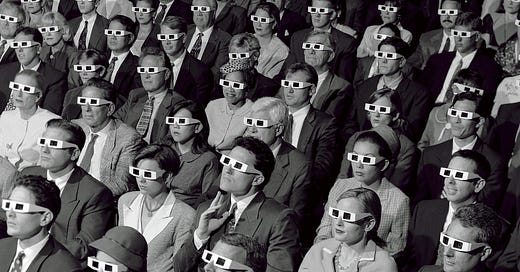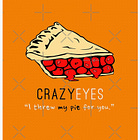Product Design(2): Using "Design for Impact" for Your Writing
A Practical Guide for Connecting to and Building Your Audience
(Part One of this post, where I break down WHY Designing for Impact is so important in the era of AI, is here:
)
Understanding Your Core Audience
For writers, understanding your audience is an ongoing, iterative process. Some of it happens on the page, as you look at your work and revise it to your own tastes and to the purpose of your writing. Some of it happens in the moment right before you show the work to someone (“Oh god, I should have fixed.....”) And then there’s the wrestling with the audience’s response.
Whether you’re writing on staff or writing for yourself, ultimately you are going to pull from who you are. I don’t think anyone can avoid that -- you write from your gut. Part of understanding your core audience is understanding what part of “you” is speaking to “them.”
Then you write from your head -- your “bag of tricks,” your skills, your talent. The thing that makes your gut instincts understandable to an audience.
When I studied Product Design, we began by looking at physical objects. We took apart disposable razor blades. We built Lego cars that would have a variety of models, but would be constructed from many similar parts.
Designing physical objects has to anticipate what the audience will want for a long time. Software is a different beast. You design for users, knowing that you can develop the software using their input. You get constant data. Your ability to innovate based on what you learn from that data is huge.
That said... I once shared a focus group room with a group of software engineers. We were behind the two-way mirror, watching them use the software that the engineers had developed. Every time a user had trouble, an engineer would mutter “Fucking morons.” They went back and did whatever it was they were going to do anyway. Usage plateaued.)
If you’re writing to build a connection to your audience, you have to think a little like a software engineer. (And yes, I know, we all can be part of the “Moron” camp, too.)
WHAT IS THE “JOB TO BE DONE”?
Products are designed to fulfill a need in the customer’s life. They have a “Job To Be Done.” You design a product that finds a gap between what’s available and what isn’t available that could do the job better.
That concept is understandable, if you’re talking about the proverbial “better mousetrap” or can opener or chain saw.
What is the job of Entertainment? How do you define the essential audience needs in a way that will help you identify the things in your writing that aren’t available and could do “the job” better?
The firm Strategyzer published this terrific set of questions to help you think about different potential customer jobs. I’ve taken a stab at rewriting them for entertainment.
The story has to do the job of identifying an emotional need in the audience, and then satisfying it. The Greeks had a word for it: Catharsis. Top of the list for “jobs to be done.”
The story presents a powerfully delivered “essential” experience. It touches the feelings that you can’t live without: Romance. Laughter. Adventure. Curiosity. Or some combination of essentials.
It does the job of helping them feel the way they want to feel.
The story has to do the job of presenting itself in a medium that where its natural audience will consume it. If the audience for your story doesn’t read, don’t write a novel. If the audience for your story loves bingeing streaming content, write a series for a streamer. Maybe your story will appeal to a TikTok audience -- how do you do the job for them in that medium?
It should have a social element. People LOVE to share what they’re consuming. Your story needs elements that create engagement and interaction. It might even elevate the status of your audience to share your story with others.
Even if they’re just wasting time, to paraphrase Vonnegut, don’t make them feel like they’ve wasted it on you.
I’m sure there are more -- leave some in the comments.
If They Don’t Want a Novel... INNOVATE
I’m currently writing a long piece that I believe is a good story. I’ve done some market research that tells me my initial impulse for how I’d distribute / publish this story might have completely missed the mark. Nobody seems to want what I’m doing in the form of a novel.
Why would I choose to toss away a novel? Because I don’t think the audience for what I’m writing wants to “consume” that story as a novel.
This is tough, especially for a writer who grew up in the prime time for books, paperback, “trade paperbacks” and fiction. But I want to have an impact. So, I’m going to continue working on my story and then use AI and human conversations to find out how to reach an audience through the platform where that audience “lives.”
How am I going to innovate? Beats me. But I will.
Is there a guarantee that I’ll have a bigger impact and reach a bigger audience by doing this? No. BUT... the experiment is worth doing.
For those of you who think that Product Design is a route to “sameness,” this is where we diverge. I’m going to have to innovate and invent. While still keeping my audience in mind, I’m going to start creating something new.
The Platform Question
Rather than lament the demise of my novel, I can take some comfort in the fact that there are a LOT of platforms out there. My audience survey says that a Youtube Series, a film or a TV series would work for them.
This is also the point where I’m thinking about the “User Journey.” Who are they? What’s their consumption pattern like? How am I meeting them where they live, without adding more “pain” to their lives? Stuff like that.
The more I write my story, the more I realize it will or won’t fit into these platforms. My mission is to entertain and inform people about the coming world of AI.
I may or may not be able to “sell” this story to a company that can help produce it as a tv series or film.
I might need to use AI -- with or without human collaborators -- to help me create a YouTube Series. (BY THE WAY - once you decide to sell your work or get collaborators, you’ll need to dig into the Product Design step of defining your Stakeholders. More later!)
The one thing I do know -- I need to begin building my relationship with the audience NOW. If I design a “product” that speaks to an audience, I can show my work and share the building of that product now. That creates an audience for my work as well as makes it more valuable to Companies that might buy it. Win-Win.
LET THEM KNOW WHAT THEY’LL GET
AKA: “The Value Proposition.”
People are busy. They might scroll past your work or give it a quick read / watch once. You need to make sure that you’ve made it clear to them why they want to KEEP COMING BACK. The tried-and-true methods are to ask for and respond to their comments, publish on a regular schedule, keep the content “digestible” so that it fits into their consumption patterns.
Let them know on social media and in the header / footers what they can expect. The great thing about creating digitally is that you can refine based on how the audience is responding. Success comes from paying close attention to what they way in response to your offers.
That includes rewriting your story. In traditional media, it’s HARD to revise on the fly. In digital media -- you can go back and rewrite, now. For many writers, the conversation about their work can become the lifeline to their audience. (And, if you want to charge for a subscription, it’s a source of revenue.)
GOING TO MARKET
I don’t know about you, but I’m getting tired. Let’s wrap this up quickly and we’ll pick up Going To Market later.
In the end, you’re going to need to set your work loose into the world. If you’ve done your design, youll have a very good idea of how your audience will learn about your product, where they’ll find it, how you can convince them to keep consuming, and even get them to pay you for the work -- and if you’re doing the job really well, for continuing your relationship.
YOU MAY BE RIGHT, I MAY BE CRAZY
(To continue the Billy Joel lyric... “But I just may be the lunatic you’re looking for.”)
When I sat down to write “Autonomous,” I had a suspicion that I wanted to use AI to assist me in my writing. The more I used it, the more I dug into other writers and academics who were using AI and writing about how it affects the creative process.
I decided to combine the two -- share my work online, and share the thinking that informs it.
I’m designing this “Product” as you read it. I’m creating “Autonomous” and sharing the way I use AI. I have a couple of other “one-off” projects just to show how the tools work. I am curating some of the best thinking around AI and Creativity and sharing it with you.
Just for fun, I did a very “meta” experiment to show you how this works. In the post “”What Are We Afraid Of: AI Will Make Us Boring,” I share something I wrote with Claude as my assistant. In the post “The Whole Transcript: Not Boring (With A Note From Claude)” I share the play-by-play of how that post was created.
To keep following along on this crazy process, please comment, join the chat and subscribe!
YOUR TURN
- Which platform challenges are you facing with your current project?
- How do you currently gauge what your audience wants?
- What's your biggest concern about using AI in your writing process?
## The Product Design Guide for Writers
*A practical series for writers navigating the AI revolution*
You're reading Part [X] of this series exploring how product design can transform your writing career:
- Part 1: Why Product Design Makes You a Better Writer
- ▶️ Part 2: The Product Design Framework (This post)
- Related: "What Are We Afraid Of: AI Will Make Us Boring"
- Related: "The Whole Transcript: Not Boring (With A Note From Claude)"
And if you think you know someone who will enjoy diving into the conversation, please share this.





